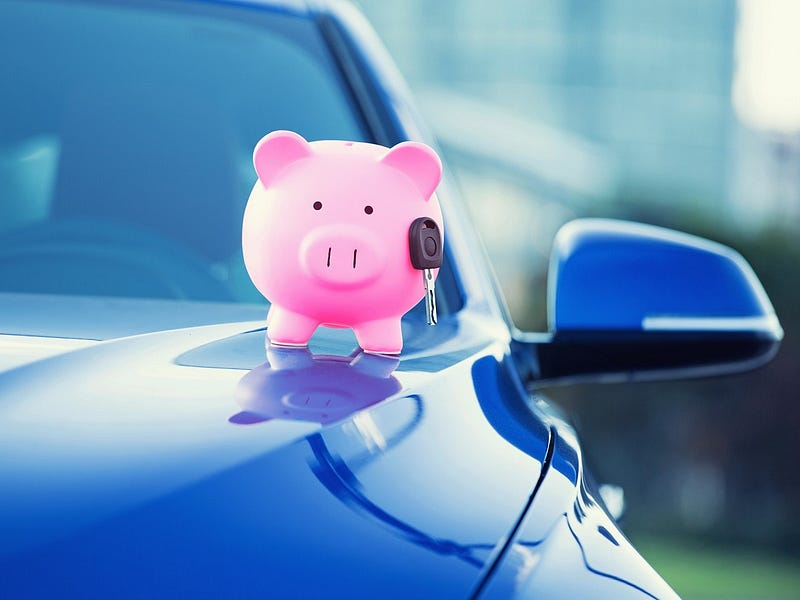The Used Car Buyer’s Smart Guide
Buying a used car offers excellent value if you approach the process with knowledge and a discerning eye.
These tips will empower you to make informed decisions, negotiate with confidence, and find a pre-owned vehicle that serves you reliably for years to come.
1. Define Your Needs and Budget

Before browsing listings, consider the practical requirements, style preferences, and financial parameters that will guide your search.
- Brand and Model: Do you have favored brands known for reliability? Research models that align with your needs (size, fuel efficiency, features). Look up reliability ratings and common maintenance issues for particular models.
- Budget: Factor in the purchase price, taxes, insurance, and estimated repair costs. Be realistic, and use online calculators to help set a budget cap.
2. Explore Your Options
Consider the pros and cons of different seller types to find the best fit for your priorities and comfort level.
- Dealerships: Reputable dealerships may offer warranties and certified pre-owned vehicles (CPOs), though prices can be higher. Look for dealerships with good customer reviews and a focus on transparency.
- Private Sellers: While potentially offering lower prices, private sales come with less buyer protection. Exercise extra caution with private listings, and prioritize a pre-purchase inspection.
3. Scrutinize the Car’s History
A car’s past reveals vital insights. Invest in resources that provide a comprehensive picture of its background.
- Vehicle History Report: A vehicle history report (Carfax, AutoCheck) is essential. It reveals accidents, reported mileage, title status (salvage, rebuilt), maintenance records, and more.
- Maintenance Records: If available, service records indicate how well the car was cared for, or if major repairs have been needed. These can be strong clues to a car’s true state.
4. Conduct a Thorough Inspection

A visual inspection is a must. Choose a sunny day and examine the car closely, both inside and out.
- Daylight is Key: Paint imperfections, body damage, rust, leaks, and inconsistencies are easier to spot under bright daylight. Bring a flashlight to inspect hard-to-see areas.
- Inspect the Interior: Seat wear, pedal condition, and steering wheel wear hint at mileage. Look for unusual odors (mold, smoke) that suggest hidden problems.
- Under the Hood: Look for signs of corrosion, leaks, DIY repairs, or unusual modifications that could signify potential issues. A cold start can offer further insights (rough idle, odd noises).
- Check the Trunk: Look under the floor coverings for signs of water damage, shoddy repairs, or replaced parts.
5. Take a Comprehensive Test Drive
A test drive simulates ownership. Pay attention to how the car responds, its overall feel, and whether any issues surface during the drive.
- Listen and Feel: Be alert for noises (clunking, squeaking), vibrations, poor braking, or rough shifting that may signal worn components.
- Test All Systems: Check air conditioning, heating, power windows, lights, sound system, and any other advanced features the car may possess.
6. Get a Pre-Purchase Inspection (PPI)
A PPI is a smart investment. A reputable mechanic can identify problems that may escape even a thorough DIY examination.
- Worth the Investment: A PPI costs a bit but could save you thousands. Find a mechanic specializing in pre-purchase inspections or one familiar with that specific car model.
7. Price Research and Negotiation
Market research gives you leverage. Use online tools and compare similar cars to negotiate a fair deal.
- Know the Market Value: Research fair market values for similar cars in your area using Kelley Blue Book, Edmunds, or NADA Guides. Factor in mileage, condition, and options.
- Don’t Rush: Be prepared to walk away if you can’t reach a price you’re comfortable with. Sellers often expect some negotiation, but your research will anchor you to a fair price.
8. Factor in Additional Costs
Hidden expenses can add up; avoid surprises by including these factors in your budgeting calculations.
- Taxes and Fees: Don’t forget to account for sales tax, registration fees, title transfer fees, and any other state-specific costs that add to the car’s total price.
- Insurance: Insurance rates vary based on the car’s age, model, your driving history, and location. Get quotes for your potential used car purchase to avoid sticker shock.
9. Consider Practical Colors

While color may seem like a purely aesthetic preference, it has practical implications in terms of maintenance needs and resale value. Light colors like silver, gray, and white tend to hide dirt and minor imperfections better than dark colors. They also don’t absorb heat as readily, keeping your car cooler in warmer climates. Lighter colors often have a slightly higher resale value as they appeal to a broader market.
10. Don’t Overlook Warranties
Warranties offer a valuable safety net against unexpected repairs, giving you peace of mind after your purchase.
- CPO Programs: Certified pre-owned cars come with extended manufacturer-backed warranties, often including roadside assistance. Research different brands’ CPO benefits carefully.
- Dealer vs. Third-Party: If a CPO car is not in your budget, consider warranties offered by the dealer or reputable third-party companies. Compare the coverage, duration, and deductibles of these options.
11. Protect Yourself from Scams
Unfortunately, scams do happen in the used car market. Stay vigilant and trust your instincts to avoid falling victim.
- Verify the VIN: Make sure the Vehicle Identification Number (VIN) on the dashboard, doorjamb, and title all match. Beware of inconsistencies, which could indicate title fraud.
- Be Wary of Too-Good-To-Be-True Deals: If a price seems unbelievably low, proceed with extreme caution. Thoroughly research the seller and car’s history, and get a PPI for any unusually cheap vehicle.
12. Finalize the Paperwork
Once you’re comfortable with the price and the car’s condition, it’s time to complete the purchase transaction.
- Documentation: Carefully review the purchase agreement or bill of sale. Ensure it accurately reflects the vehicle’s details, price, and any warranties included.
- Secure the Title: Make sure you receive a clean title in your name to legally transfer ownership; the process may vary slightly depending on your state.
13. Consider Extended Protection
Evaluate the need for additional warranties. Discuss whether an extended warranty makes sense for your car of choice, weighing the cost against potential future repairs.

Final Words
Buying a used car can be an excellent way to find a dependable vehicle at a fraction of the cost of a new model.
By following these essential tips, you’ll be equipped to navigate the used car market with confidence. Remember, research, inspection, and smart negotiation are your keys to finding a hidden gem that will provide reliable transportation for years to come.

